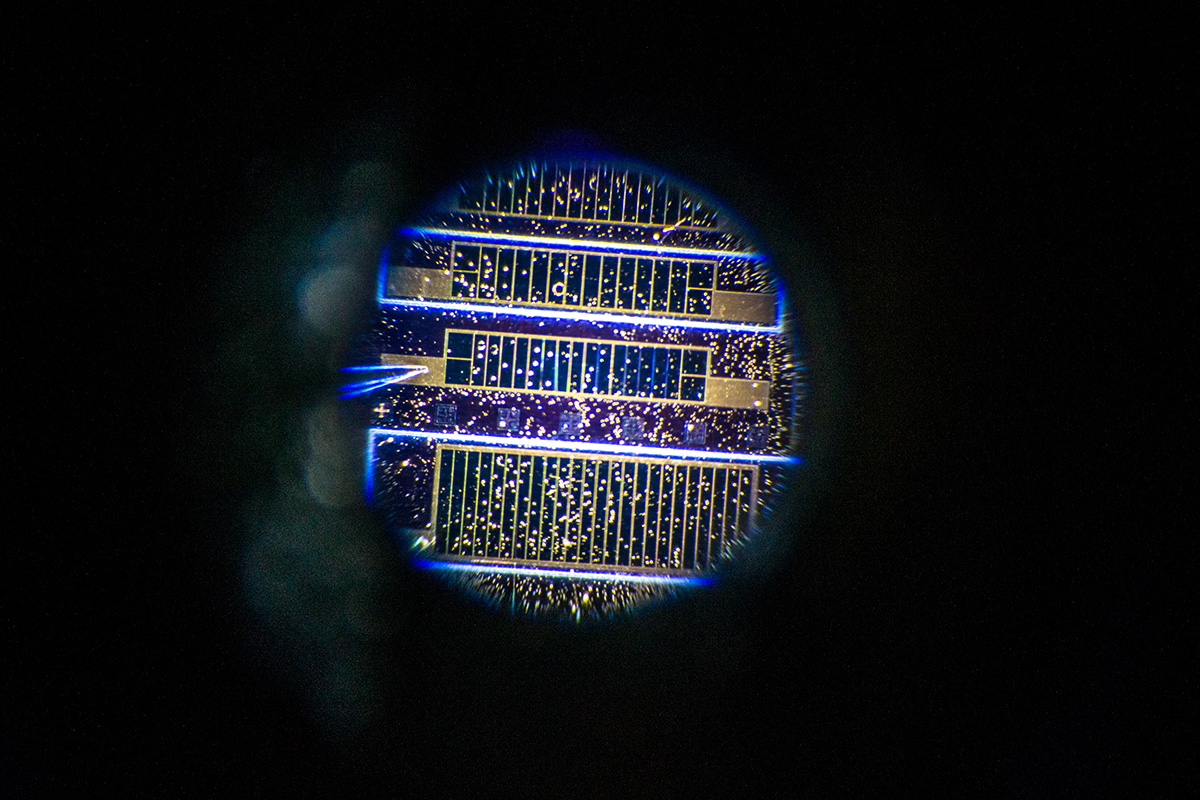Summary
The project aims to cut solar energy costs by developing a high voltage solar cell that will be 40% more efficient than solar cells being used today.
Key results
- Integrating test structures into the tandem solar cell design enables direct testing of the materials and device parameters. These test structures can be constructed simultaneously with solar cell fabrication. This allows detailed analysis, including the electrical and optical parameters, for each layer in this complex structure and leads to more advanced modelling and accurate prediction of the device performance
- Three-terminal (3T) measurements allow separate analysis of top cell and bottom cell in a tandem structure. It can not only provide current-voltage characteristics for both sub cells simultaneously, but also facilitates the detailed analysis of current-limiting and current-matching cases, and the extraction of the cell parameters. This is a leveraging technique for this project and can also be applied to other tandem solar cell projects.
- Monitoring wafer bowing during the III/V materials growth is essential to producing high quality (low TDD) materials. Wafer bowing is a symptom of stress in the material (leading to increased TDDs) caused by changing atomic spacing during the epitaxial growth of III/V materials.
- The current of this dual junction tandem solar cell is limited by the SiGe bottom cell as the structure and composition of the bottom cell are not yet optimised. This also constrains the performance of the tandem solar cell due to the requirement of current matching for a 2T double junction tandem solar cell. Therefore, it is important to improve the structure design of the bottom cell and apply light trapping techniques to increase the bottom cell performance. A silicon dioxide (SiO2) dielectric layer between the Si substrate and the Al back contact can be used to improve the back-surface reflectance. This SiO2 dielectric layer is called a back-surface reflector (BSR). A proper BSR not only increases the current output of the SiGe bottom cell by enhancing the light path lengths in the solar cell, but also boosts the voltage output due to its passivation effect.
Learn more
Need
Researchers aimed to make solar power more attractive to consumers by making the energy cost comparable with, or lower than, delivered electricity from fossil fuel sources.
Project innovation
The project aimed to cut solar energy costs by developing a high voltage solar cell that will be 40% more efficient (produces more electricity) than solar cells being used today. It involved combining three cutting-edge technologies to produce a new, low cost high efficiency solar cell.
The bottom layer was based on a solar cell developed at UNSW that has produced world record levels of silicon solar cell efficiency. The work sought to combine a new high performance, low cost solar cell produced from silicon- germanium (SiGe) grown on silicon, and a new high voltage gallium arsenide phosphide (GaAsP) solar cell grown as the top cell using an innovative set of processes developed by the US partners.
The project aimed to improve and integrate each component to produce a new, low cost, high efficiency tandem solar cell that could lead to a 30% reduction in the cost of solar generated electricity.
Benefit
The cost reduction and increased efficiency that is possible using this technology could accelerate the reduction in solar electricity cost to the point where, by mid-decade, the price would be comparable with that of electricity from conventional sources in residential, commercial and utility markets.





